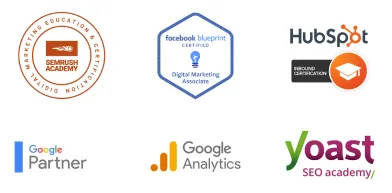TO LEARN IS TO GROW
Learning Center
We do our research and publish our results. Should probably call this the Growing Center.


Farewell to Flash: Everything You Need to Know
Ladies and gentlemen, it looks like Steve Jobs’ vision of an internet without the Flash Player is finally going to be a reality by the end of 2020.
Adobe will finally be discontinuing the support of the Flash player, one of the web’s original building blocks that made it into the fun and crazy digital landscape that it is today.
If you grew up in the early 2000s, you probably wasted hours on all sorts of interactive web games and animated shorts— which were all a big deal back in the day, and this was all at the height of Flash’s popularity.
(Remember Geocities? Newgrounds?)
The reality is this: less than 5% of all websites worldwide today are using Flash. These figures are down from 28.5% in 2011, and it is that continued decline that made Adobe finally decide to pull the plug on this once-great format.
How Did Flash Become Such a Big Deal?
For folks who weren’t around in the early days of the internet, there was a time when webpages were just flat boring online brochures. With the introduction of Flash, websites now became interactive experiences, allowing publishers to have animation, games, and other fun ways of delivering content to users.
Remember: this was way before there was streaming, even before there was a YouTube. Heck, YouTube used to be powered by Flash when it was founded in 2005.
Flash actually started out in the mid-1990s as a piece of software in the old Netscape browser known as “Future Splash Viewer”, which supported animations and vector images (much to the delight of graphic designers at the time).
This got the attention of Microsoft, which then used the Future Splash Viewer on its home page to help make it visually stand out over its competitors at the time. This gave the software even more awareness, leading to its purchase by Adobe, and then rebranding it as “Flash” — just as we know it today.
From that point onwards, Flash was the go-to solution to make websites much more interactive, with all sorts of brands and products developing their own beautiful Flash websites. Product demos, virtual tours, and all sorts of presentations on websites were now possible thanks to Flash.

How Is It That Flash is Being Replaced?
Hang on a second— if the venerable Flash was such a big deal, why then is it being shut down? What caused its downfall as a format?
Probably the first major nail in the proverbial coffin for Flash came in 2007, when the very first iPhone was released. Apple decided not to use Flash; partly because it was someone else’s tech, but mostly because it was so very resource-heavy (ergo, it could drain batteries faster), and the video decoding was found to be inefficient.
(How was Adobe to know that the iPhone was going to be a cultural phenomenon?)
Other flaws of Flash were coming out as well. More notably, in terms of security; malware developers see Flash as an easy way to hack into systems because of easily exploitable gaps. And at some point, Adobe was even criticized for not taking these security lapses seriously.
More nails in the coffin: YouTube finally transitioned away from Flash in 2015, opting to use HTML5 instead. Improvements in open standards have made better tech available that continued to eat away at Flash’s market share in high-quality video and interactive web experiences.
In a way, you can say it’s been a long time coming. As Flash will be discontinued in 2020, most browsers that still support it now will drop it completely as soon as Adobe pulls the plug on its support.
A World Without Flash
You don’t have to worry though— your browsing experience won’t be affected. Usually, Flash players are disabled by default as more suitable alternatives such as HTML5, CSS3, Unity, and WebGL have stepped in to cover what Flash previously did for you.
Just because Adobe has cut off support for Flash doesn’t mean it will disappear completely. Today, Flash (offline) is still used in the animation industry, and there are still websites up and running that continue to be powered by Flash.
As for the massive repository of Flash-developed games, you can still download your favorite apps to play forever on your desktop if you so choose.

A Final Word About Flash
Truly, it is the end of an era. At one point, Flash was indomitable as far as online multimedia content was concerned.
It’s the great circle of life of the online world; as older tech retires, we run the risk of losing so much creative work (games, apps, and entire websites), vanishing completely or just plain forgotten, eventually.
Still, newer, better technologies have continued to emerge, and even Adobe has favored a transition to HTML5, even as it continues to develop Adobe AIR (for apps and games). Developers have just found HTML5 to be much leaner, much more efficient, and a joy to work with.
Growing Businesses Since 2008
We have helped hundreds of businesses just like yours. Working for or along-side of business owner, managers, staff, or even board of directors, LOJO is ready to be an asset to your business.
Our team has been curated through the years for individual skills, personalities, and capabilities. Our clients put their trust in us to help them grow. We are here to do just that.



Growing Businesses Since 2008
We have helped hundreds of businesses just like yours. Working for or along-side of business owner, managers, staff, or even board of directors, LOJO is ready to be an asset to your business.
Our team has been curated through the years for individual skills, personalities, and capabilities. Our clients put their trust in us to help them grow. We are here to do just that.




Matthew Rogers, President
iProspect Check
After spending several months reviewing multiple proposals from several different companies we engaged LOJO to develop a new website that represents our company effectively. We worked initially with Stephen Platte who helped create the scope of the project. Stephen was knowledgeable and always followed up with me on time and as promised.
He "closed the deal" for LOJO with his professionalism, service orientation and easy going approach. Once we signed the contract we were introduced to Jay Kelly who would be the creative lead for LOJO. This was the most challenging part of the project for my company, as there was no shortage of ideas from our side. Jay managed the project flawlessly, and once we had all agreed to the design, Jay introduced us to Eric.
Eric Lay is one of the founders of LOJO. Eric took the design we had developed and brought it to life. We delivered content as quickly as he requested it. Eric kept the project on task and we responded by exceeding every deadline for content. In turn, once provided, literally not a day went by that Eric didn't add the content and take the next step. In just a few weeks we launched our new website. Eric is a pleasure to work with.
His positive attitude and consultative approach really enhanced the experience and made a big difference for us in the outcome of our project. We would welcome you to visit our website to take a look at the quality work of LOJO. We are very pleased with LOJO and look forward to working with them in the future as we pursue an aggressive SEO strategy."
After spending several months reviewing multiple proposals from several different companies we engaged LOJO to develop a new website that represents our company effectively. We worked initially with Stephen Platte who helped create the scope of the project. Stephen was knowledgeable and always followed up with me on time and as promised.
He "closed the deal" for LOJO with his professionalism, service orientation and easy going approach. Once we signed the contract we were introduced to Jay Kelly who would be the creative lead for LOJO. This was the most challenging part of the project for my company, as there was no shortage of ideas from our side. Jay managed the project flawlessly, and once we had all agreed to the design, Jay introduced us to Eric.
Eric Lay is one of the founders of LOJO. Eric took the design we had developed and brought it to life. We delivered content as quickly as he requested it. Eric kept the project on task and we responded by exceeding every deadline for content. In turn, once provided, literally not a day went by that Eric didn't add the content and take the next step. In just a few weeks we launched our new website. Eric is a pleasure to work with.
His positive attitude and consultative approach really enhanced the experience and made a big difference for us in the outcome of our project. We would welcome you to visit our website to take a look at the quality work of LOJO. We are very pleased with LOJO and look forward to working with them in the future as we pursue an aggressive SEO strategy."

Matthew Rogers, President
iProspect Check
The team at LOJO were wonderful to work with. They are well organized and very patient as we worked through our marketing strategy and developed a well thought out and clear action plan at a reasonable price. We will definitely be back for our future campaign needs."

Jon Crosby, Founder
Dazil

